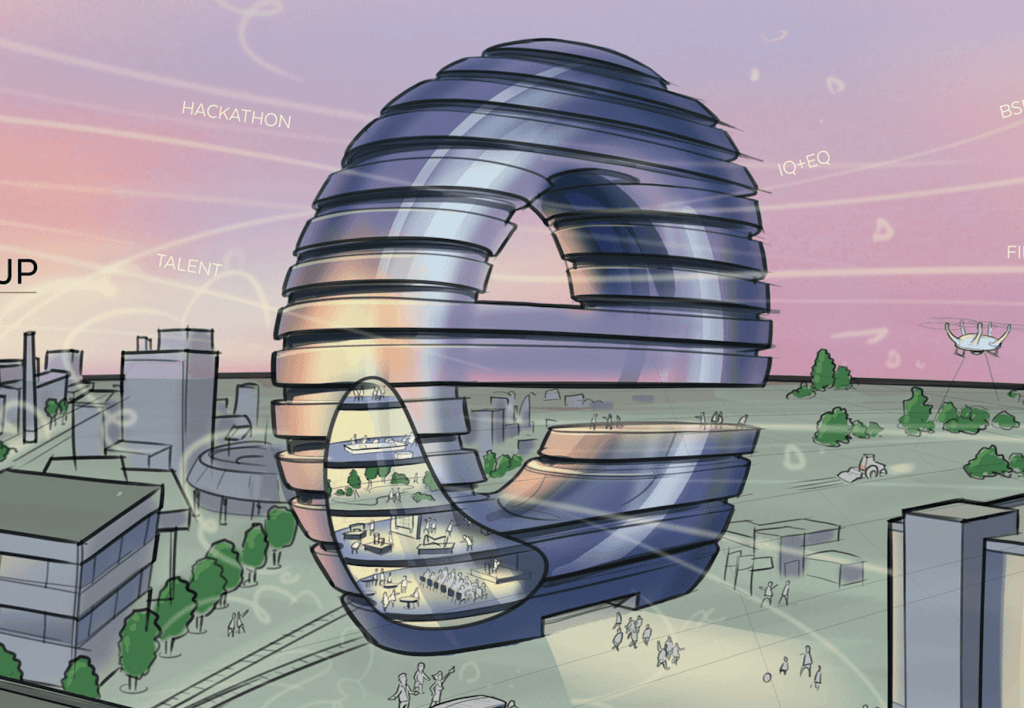
In his columns, Maarten Steinbuch regularly writes about the Eindhoven Engine, an idea from his case that has been embraced within the framework of the ‘Regiodeal’. Brainport Development spoke with Clement Goossens, Head of Innovation Strategy & Partnerships at the TU/e and leader of the Engine.
What is the Eindhoven Engine?
“We call it a delta, a summit on top of the existing ecosystem, consisting of three layers. The lower layer consists of companies that innovate themselves, the second layer concerns joint research projects of educational institutions and companies, and the upper layer (the top of the triangle) is a physical location to bring the other two layers together. In this way, we can realise a unique combination of talents. Talents who have the potential to innovate disruptively, the game changers for the world. Not only researchers and scientists from companies and educational institutions, but also the best brains of tomorrow. We want to bring together the open-minded spirit of ambitious students within the Eindhoven Engine with innovative entrepreneurs. Together they can come up with solutions for the so-called sustainable development goals at an even faster pace.”
Why is it necessary?
“A joint research location where different parties can explore different themes and find each other along that track, literally around the corner, is essential to accelerate the development process. Take, for example, a team that does research into powerful batteries, a team that looks into connected driving and a team that researches lithography. They can use each other’s knowledge and products very well in order to make progress in the field of electric and autonomous driving. To do so, it’s essential that they are just a stone’s throw away from each other and can influence each other’s research. Not private R&D, but public-private R&D, for and by the region.”
Why does this fit in well with Brainport Eindhoven?
“This has a lot to do with Philips’ history in this region. This has created a strong awareness of the need for a common strategy. This awareness is now so deeply rooted that it is precisely here that a partnership such as the Eindhoven Engine is possible. The people in Brainport Eindhoven do not think very hierarchically and are technologically enterprising. It is here that the approach mentality prevails, at all levels.”
What is still needed for the realisation of the Eindhoven Engine?
“In the initial phase we need – literally and figuratively – sufficient experimental space to experience how we can organise the collaboration as structured and at the same time as openly as possible. We envisage a pilot phase of five years, for which we are looking for a co-location to accommodate a number of projects. In that period we want to grow from 50 to 250 people. That will cost a lot of money, so we hope to raise that through the Brainport National Action Agenda. After a successful pilot phase, we will confidently hand over the Eindhoven Engine to private investors. Ultimately, the Eindhoven Engine, just like today’s Evoluon, has to become a beacon of innovation.”
What is already going well in the region in this area?
“Innovative parties are already finding each other very well in drawing up a joint strategy. There is a strong network here that is being put to good use. This has had a successful effect and Brainport Eindhoven has thus gained a worldwide appeal. The Eindhoven Engine will further increase this so that we can bring thousands of good minds to this region every year.”

